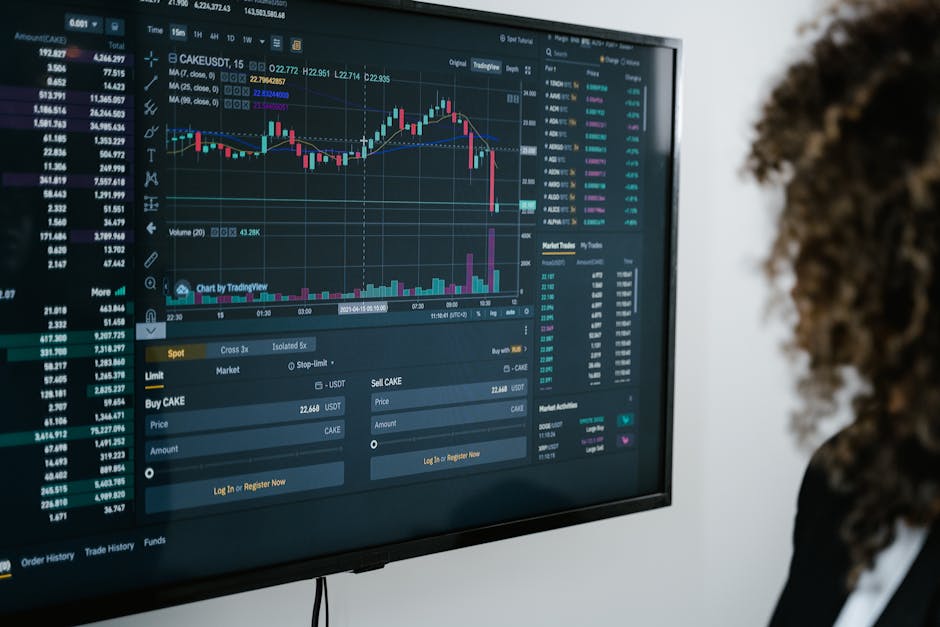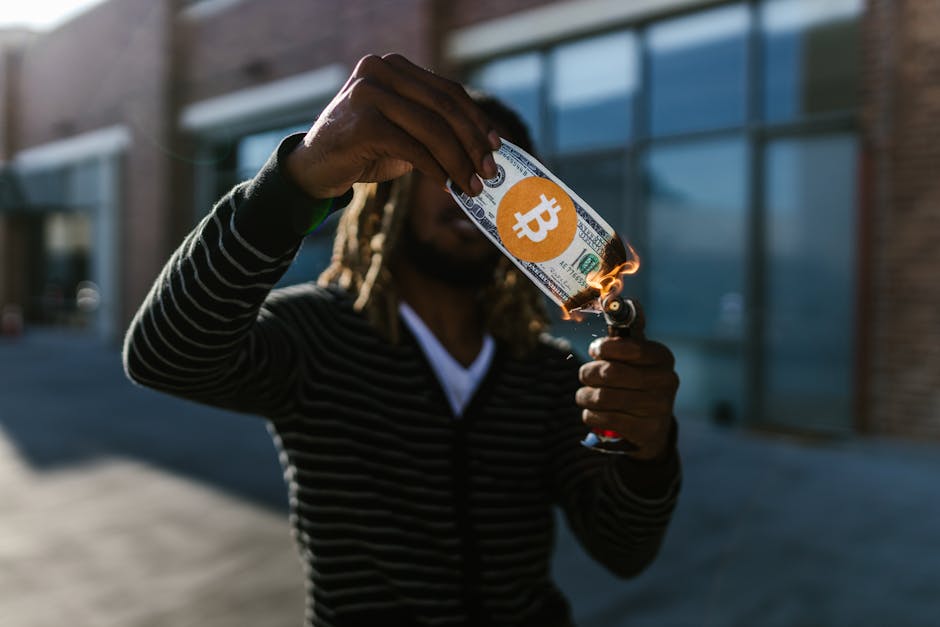Understanding the Wild World of Crypto
The crypto market refers to the global marketplace where cryptocurrencies are bought, sold, and traded 24/7. For newcomers seeking a quick overview:
What is the crypto market?
* Total Market Capitalization: Currently $3.62 trillion
* 24-hour Trading Volume: Approximately $129 billion
* Number of Cryptocurrencies: Over 16,990 different coins and tokens
* Market Leaders: Bitcoin (56.1% dominance) and Ethereum (10.4% dominance)
* Key Characteristics: Highly volatile, operates 24/7, decentralized exchanges
The crypto market operates differently from traditional financial markets, with dramatic price swings that can make millionaires overnight or wipe out savings in hours.
Think of cryptocurrency markets as the wild west of investing – exciting, unpredictable, and not for the faint of heart. Like a rollercoaster, your emotions will soar with the peaks and plummet with the valleys. One day Bitcoin might surge 15%, the next it could drop 20% on a single tweet or regulatory announcement.
What makes this market unique is its accessibility and transparency. Anyone with an internet connection can participate, track on-chain data, and trade at any hour of any day. There are no closing bells in crypto.
Unlike traditional stock markets with decades of historical patterns and institutional guardrails, the crypto market is still maturing. It’s influenced by a complex mix of technological developments, regulatory news, macroeconomic forces, and social media sentiment.
Whether you’re curious about Bitcoin’s latest price movement or wondering if you should dip your toes into this digital asset class, this guide will help you steer the crypto market’s twists and turns with greater confidence.

What Is the Crypto Market, Really?
The crypto market is like a busy digital bazaar that never closes its doors. Born in 2009 with Bitcoin’s launch by the mysterious Satoshi Nakamoto, this marketplace has transformed from a single cryptocurrency experiment into a vibrant ecosystem hosting thousands of digital assets worth trillions.
When you strip away all the jargon and hype, the crypto market is fundamentally about people trading digital tokens based on what they believe they’re worth. Unlike traditional markets that have existed for centuries, crypto is still finding its footing as a teenager in financial terms.
At its heart, what makes the crypto market unique is decentralization – most cryptocurrencies operate on blockchain technology that spreads control across thousands of computers worldwide rather than concentrating power in the hands of banks or governments. This means no single entity can shut the system down or change the rules unilaterally.
The value of the entire crypto market is measured by its market capitalization – currently hovering around $3.62 trillion – calculated by multiplying each cryptocurrency’s price by its circulating supply. Speaking of supply, many cryptocurrencies like Bitcoin have fixed or predictable circulation schedules (Bitcoin will never exceed 21 million coins), creating scarcity that traditional currencies printed by central banks don’t have.
Beyond Bitcoin lies a vast universe of altcoins – any cryptocurrency that isn’t Bitcoin. These range from established projects like Ethereum to meme-inspired tokens that might appear and disappear in the span of weeks. Many of these altcoins offer smart contracts, self-executing agreements with terms written directly into code, which have enabled everything from decentralized lending platforms to digital art marketplaces.
As Bob Baxley, a DeFi infrastructure contributor, puts it: “We’re in a phase where the market will likely trade sideways for a few months. There simply isn’t enough fresh capital coming in to sustain continued price increases.”
For those wanting to dive deeper into the fundamentals beyond the crypto market, check out our comprehensive More info about Digital Currencies guide.
How the crypto market differs from stocks
If traditional stock markets are like structured ballroom dancing with clear rules and schedules, the crypto market is more like a rave that never ends. Here’s what makes it different:
The most obvious distinction is that the crypto market never sleeps. While stock traders clock out at 4 PM Eastern time, crypto enthusiasts can trade at 3 AM on Christmas morning if they want. This 24/7 nature means news can impact prices at any hour, and significant movements often happen on weekends when traditional markets are closed.
The crypto market also offers unprecedented transparency through on-chain data. Want to see exactly how many Bitcoin are held by the largest wallets? Or track every transaction involving a particular token? It’s all there on the blockchain for anyone to analyze – a level of transparency unimaginable in traditional markets where insider information often gives big players an edge.
Each cryptocurrency also operates according to its own economic rules or tokenomics. These include how new tokens are created, how they’re distributed, what gives them value, and how governance decisions are made. This creates fascinating economic experiments happening in real-time.
Volatility in the crypto market makes stock market swings look tame by comparison. While a 2% daily move in the S&P 500 makes headlines, Bitcoin has experienced single-day movements exceeding 20% – something that would trigger circuit breakers and trading halts in traditional markets.
The accessibility of crypto also stands out. While investing in stocks often requires jumping through KYC hoops and minimum deposits, many crypto platforms allow anyone with internet access and as little as $10 to start trading immediately.
As Brent Xu, CEO of a Web3 bond market, observes: “The correlation between crypto and traditional markets has increased substantially. We’re trading more macro than usual in crypto, with Bitcoin’s correlation to the Nasdaq hitting an all-time high of 0.70 in recent months.”

State of the Crypto Market Today
Wondering just how big the crypto market is right now? Picture this: a massive $3.62 trillion ecosystem that’s constantly in motion. That’s roughly the size of the world’s fourth-largest economy! And it’s not sitting still either—just yesterday, we saw it swing 2.2% in a single day.
Every 24 hours, about $129 billion changes hands across the crypto market. That’s more than the GDP of many countries flowing through exchanges like Binance and Coinbase, as well as through decentralized platforms like Uniswap where traders swap tokens directly with each other.
Bitcoin continues to wear the crown in the crypto market, commanding a whopping $1.95 trillion in market value. Think of Bitcoin as the elder statesman that still controls 56.1% of the entire crypto economy. It’s like the sun in our solar system—everything else orbits around it.
Ethereum sits comfortably in second place with a $334.7 billion market cap, making up 10.4% of the crypto market. While that might seem small compared to Bitcoin, Ethereum’s impact is enormous. It’s like comparing the size of a foundation to the building it supports—Ethereum underpins countless applications, NFT marketplaces, and financial protocols that make the crypto world go round.
Don’t overlook stablecoins like Tether (USDT) and USD Coin (USDC)! These digital dollars act as safe harbors during stormy market conditions. They’re the bridges between traditional money and crypto, often seeing more daily trading than most other cryptocurrencies combined.
| Feature | Bitcoin (BTC) | Ethereum (ETH) |
|---|---|---|
| Current Price | ~$98,930 | ~$2,771 |
| Market Cap | $1.95 trillion | $334.7 billion |
| 24h Volume | $47.3 billion | $29.3 billion |
| 24h Change | +0.90% | +1.16% |
| YTD Performance | +337.70% | +56% |
| Consensus Mechanism | Proof of Work | Proof of Stake |
| Max Supply | 21 million | No fixed maximum |
Curious about how experts calculate these massive market values? Check out this detailed Scientific research on market metrics for the full breakdown.
Leaders by market cap in the crypto market
The hierarchy in the crypto market looks a bit like a digital Fortune 500, with a few giants towering over thousands of smaller players. Let’s meet the heavyweights:
Bitcoin (BTC) remains the undisputed champion with its massive $1.95 trillion market cap. Recently breaking $97,000, Bitcoin has come a long way from its humble beginnings. Remember when people thought $1,000 was expensive? Those were the days!
Ethereum (ETH) holds strong at $334.7 billion, cementing its place as the foundation of Web3. Since switching to proof-of-stake, Ethereum has become much greener too—reducing its energy consumption by over 99%. Not bad for the platform that basically invented smart contracts!
Solana (SOL) has raced up the rankings with its lightning-fast transactions and minimal fees. Developers love it for building apps that need to handle thousands of transactions per second without breaking the bank on gas fees.
Tether (USDT) might not make headlines for price movements, but this stablecoin is the oil that keeps the crypto market engine running smoothly. Pegged to the dollar, it’s what traders use to quickly move in and out of positions.
USD Coin (USDC) serves a similar purpose to Tether but with added transparency. It regularly publishes proof that it has the dollars to back up its tokens—something that gives many traders peace of mind.
Bitcoin’s 56.1% dominance shows it’s still the safe haven most investors turn to first, while Ethereum’s 10.4% reflects its critical role as the infrastructure layer of the new digital economy.
Biggest gainers & losers in the crypto market
The crypto market is where financial dreams and nightmares happen at warp speed. One day you’re up 300%, the next you’re wondering what happened to your money. Here’s who’s been riding the rocket ships lately:
Aventus (AVT) has been turning heads with impressive gains. Their blockchain solution for ticketing and digital assets is gaining real-world traction—something that’s surprisingly rare in crypto!
Venice Token (VENICE) splashed onto the scene recently, with its DeFi ecosystem making waves. Early adopters have been rewarded handsomely as new yield opportunities emerge in their protocol.
XYO Network (XYO) is proving that location matters, even in the digital world. This geospatial blockchain project has seen its token value climb as more people recognize the value of verified location data in an increasingly digital economy.
Pendle (PENDLE) found its niche in tokenizing future yield—basically letting you trade tomorrow’s earnings today. As yield trading becomes more sophisticated, Pendle has caught the attention of DeFi power users.
TAO (TAO) rounds out our winners circle, with its governance framework attracting investors looking for the next big thing in decentralized organization.
On the flip side, several tokens have taken serious tumbles. What’s fascinating about the crypto market is how quickly fortunes can reverse. Today’s losers often become tomorrow’s comeback stories as capital sloshes between different sectors like water in a bathtub.
Many seasoned investors watch these dramatic swings closely, looking for opportunities when quality projects get caught in temporary downtrends. Just remember—in crypto, what goes down doesn’t always come back up!

Trends, Shifts & Catalysts Driving Prices This Week
The crypto market is like a living, breathing organism that responds to countless stimuli. Right now, several fascinating forces are pulling prices in different directions.
Bitcoin spot ETFs have become the new darlings of Wall Street, with a whopping $3.28 billion flowing into these investment vehicles this month alone. It’s like watching institutional money vote with their wallets. As one recent market report put it: “Weekly Bitcoin ETF inflows reached $901 million, while Ethereum continues to see outflows of around $35 million.” This divergence tells an interesting story about where the smart money is placing its bets.
Remember the Bitcoin halving that just happened? These events, which cut the rate of new Bitcoin creation in half, have historically been like rocket fuel for bull markets. We’re seeing similar patterns with other cryptocurrencies too – Helium jumped about 19% after its own halving. It’s like watching a predictable economic experiment play out in real-time.
The regulatory landscape continues to shape the crypto market in profound ways. The SEC’s January 2024 approval of Bitcoin ETFs was like opening the floodgates for mainstream adoption. But this relationship works both ways – when regulators frown, prices often tumble.
What happens on Wall Street increasingly matters in crypto. When “S&P 500 futures erased around $2 trillion of market cap in 15 minutes,” the crypto market felt the tremors immediately. This growing correlation shows how crypto has become woven into the broader financial fabric.
Whale watching has become a serious pastime for market analysts. Recent data shows addresses holding at least 1,000 BTC have increased by 11.68% this year, reaching 1,678 wallets – a four-year high. When these big fish accumulate, it often signals confidence in Bitcoin’s long-term prospects.
Perhaps the most colorful trend is the marriage between artificial intelligence and memecoins. While the broader AI token sector has seen its market cap shrink by 17.18% to $32.58 billion, specific AI memecoins like GOAT have exploded with gains up to 492%. It’s like watching the most futuristic technology combine with internet humor to create entirely new investment categories.
For those wanting a deeper dive into recent market movements, the Bitcoin Wobbles article offers excellent insights into the day-to-day price action.
Macro forces shaking the crypto market
The crypto market doesn’t exist in a vacuum – it’s increasingly dancing to the tune of global economic forces.
Inflation and the Federal Reserve’s response to it have become major plot points in the crypto story. When the Fed turns hawkish and raises rates, crypto often feels the chill as investors seek safer harbors. A recent market analysis noted, “Fed rate-hike odds fell to 14% from 20% following the latest jobs report.” These shifting expectations can send ripples – or waves – through the crypto market in hours.
Global tensions don’t stay global anymore. Trade disputes and tariff announcements can trigger market-wide volatility faster than ever. Recent U.S. tariff announcements projected inflation might climb to around 5%, contributing to a sell-off that didn’t spare cryptocurrencies.
China’s economic decisions continue to cast a long shadow. As a global powerhouse, its monetary easing measures and regulatory stance toward cryptocurrencies can shift market sentiment worldwide. Recent stimulus efforts have provided some breathing room for risk assets globally.
The whispers of de-dollarization have become louder, with countries like Russia, China, and Brazil exploring alternatives to the U.S. dollar for international trade. Some investors see Bitcoin as a potential hedge against this trend, supporting its price when the dollar shows weakness.
When traditional markets catch a cold, crypto often gets pneumonia. A recent equity sell-off saw “S&P 500 futures erasing around $2 trillion of market cap in 15 minutes,” triggering a cascade of crypto liquidations – over $490 million wiped out across more than 160,000 traders in a single day. These interconnected reactions show how the crypto market has become part of the broader financial ecosystem.
Understanding these macro currents isn’t just academic – they often signal major trend changes that can override even the strongest project fundamentals in the short term.
Tech & regulatory sparks in the crypto market
While economics sets the stage, technology and regulation often steal the show in the crypto market.
The Layer-2 race has heated up considerably, with networks like Arbitrum now holding over $13 billion in Total Value Locked. Base, another scaling solution, recently hit an impressive 1.72 million daily active addresses. These Layer-2 networks are like efficiency engines for Ethereum, reducing transaction costs while maintaining security – and investors are taking notice.
January 2024 marked a watershed moment when the SEC approved spot Bitcoin ETFs. This wasn’t just a regulatory footnote; it was like opening the door to a whole new category of investors. As one analyst perfectly captured it: “This opens the way for a much wider range of investors to be able to add some exposure to cryptocurrency in their portfolios.” The impact continues to unfold as these investment vehicles gather billions in assets.
Decentralized prediction markets are having their moment in the sun. Polymarket’s monthly betting volume has surged to $1.3 billion – 2.5 times its Q3 average. With 85% of prediction market TVL on Polygon-based platforms, we’re watching a fascinating use case for blockchain technology evolve in real-time, particularly around event outcomes like elections.
Digital identity solutions are finding their way into mainstream projects. Take Shiba Inu (SHIB), which saw a 4% price increase after announcing plans to integrate digital identity frameworks into its ecosystem. This shows how utility-focused developments can still move prices in the crypto market, even for projects that began as memes.
The ongoing legal chess matches between crypto companies and regulators continue to create winners and losers. XRP found price stability around $0.64 following a partial court victory against the SEC, demonstrating how regulatory clarity – even incomplete clarity – can be a powerful market force.
These technological and regulatory catalysts often drive sector rotation within the crypto market, as money flows toward areas with improving fundamentals and away from those facing headwinds. Smart investors watch these shifts closely, recognizing that today’s regulatory challenge might become tomorrow’s opportunity.

Riding the Rollercoaster: Opportunities & Risks
The crypto market presents a unique landscape of both extraordinary opportunities and significant risks. Understanding both sides of this equation is essential for anyone looking to participate in this emerging asset class.
On the opportunity side, several sectors within the crypto market show particular promise:
DeFi (Decentralized Finance): With over $9.84 billion in daily volume (representing 8.50% of total crypto trading), DeFi protocols offer innovative financial services without intermediaries. These range from lending and borrowing platforms to decentralized exchanges and yield farming opportunities.
Layer 1 Blockchains: These foundational networks like Ethereum, Solana, and emerging competitors offer the infrastructure for decentralized applications. Investing in promising Layer 1 tokens provides exposure to entire ecosystems rather than single applications.
Memecoins: While highly speculative, meme-inspired cryptocurrencies can deliver extraordinary returns. The emergence of AI-related memecoins has created a new subsector with tokens like GOAT seeing gains of up to 492%. However, these come with extreme volatility and risk.
Altcoin Season: Historically, after Bitcoin establishes strong upward momentum, capital often flows to smaller altcoins in what’s known as “Altcoin Season.” The Altcoin Season Index helps track this phenomenon, which can present opportunities for outsized returns in select projects.
The current market sentiment, as measured by the Fear & Greed Index, stands at 55/100—a neutral position that suggests neither extreme fear nor excessive optimism. This balanced sentiment often provides a more stable environment for strategic investment decisions.
For those interested in staying ahead of emerging trends in the crypto market, our More info about Cryptocurrency Trends resource provides deeper insights into evolving narratives and opportunities.
Where new tokens emerge
The crypto market constantly evolves with new tokens appearing daily. Understanding where and how these tokens emerge can help investors identify opportunities early:
DEX Pairs: Decentralized exchanges like Uniswap or PancakeSwap are often the first trading venues for new tokens. Tools like Dexscan automatically track new trading pairs across major blockchains, with data showing that monitoring the top 70 chains covers over 97% of all tokens in the global market.
Exchange Listings: Major centralized exchanges have rigorous listing processes. When a token graduates from DEXs to a major exchange like Binance or Coinbase, it often experiences a “listing pump” due to increased accessibility and perceived legitimacy.
Telegram Bots: Many traders use automated Telegram channels that alert subscribers to new token listings, significant price movements, or whale transactions. These can provide early signals about emerging opportunities in the crypto market.
Launchpads: Platforms like Binance Launchpad or DAO Maker help incubate and launch new cryptocurrency projects, often giving early investors access to tokens before they hit the broader market.
Airdrops: Established projects sometimes distribute new tokens to existing users or holders of certain cryptocurrencies. These airdrops can provide free exposure to new projects, though they vary widely in value and legitimacy.
The pace of new token creation is staggering, with data showing over 16,993 cryptocurrencies currently being tracked. This abundance creates both opportunity and risk—for every legitimate project with real utility, many others will fail to deliver on their promises or may even be outright scams.
Managing risk when investing in the crypto market
The extreme volatility and relatively nascent state of the crypto market necessitate robust risk management strategies:
Position Sizing: One of the most fundamental risk management techniques is appropriate position sizing. Many experienced crypto investors follow the 1-5% rule, never allocating more than 5% of their portfolio to a single cryptocurrency, and keeping higher-risk assets at the lower end of this range.
Diversification: Beyond simply holding multiple cryptocurrencies, true diversification in the crypto market means exposure to different sectors (DeFi, infrastructure, NFTs), different risk profiles (established vs. emerging projects), and potentially different blockchain ecosystems.
Cold Storage: Security is a critical aspect of risk management. Hardware wallets or “cold storage” solutions keep private keys offline and protected from hacking attempts. As the saying goes in crypto: “Not your keys, not your coins.”
Dollar-Cost Averaging: Rather than trying to time the market, many investors use dollar-cost averaging—investing a fixed amount at regular intervals regardless of price. This strategy helps mitigate the impact of volatility and reduces the psychological stress of timing entries.
Risk-Reward Ratios: Before entering a position, establishing clear risk-reward parameters helps maintain discipline. For example, only taking trades with a potential 3:1 reward-to-risk ratio means you can be wrong twice as often as you’re right and still be profitable.
Stay Informed: The crypto market moves quickly, and information asymmetry can be costly. Following reputable news sources, official project channels, and on-chain metrics helps make more informed decisions.
For comprehensive guidance on safely navigating the cryptocurrency landscape, we recommend our detailed resource on More info about How to Safely Invest in Digital Currencies.

Frequently Asked Questions about the Crypto Market
What is the current total crypto market cap and how has it moved lately?
The crypto market is currently valued at approximately $3.62 trillion—that’s all cryptocurrencies combined, from Bitcoin to the tiniest altcoin you’ve never heard of. In just the last 24 hours, this figure has wiggled up and down by about 2.2%, which is actually a relatively calm day by crypto standards!
Looking at the bigger picture, we’ve seen a more significant pullback over the past week, with the total market value dropping by about 9.22%. This kind of weekly fluctuation is precisely why crypto investors often develop nerves of steel—or lose sleep at night.
It’s worth putting these numbers in context, though. Despite recent dips, we’re still seeing remarkable recovery from the depths of the previous bear market, when things looked considerably bleaker. While we haven’t quite returned to the dizzying all-time highs of previous cycle peaks, the trajectory suggests growing mainstream adoption and institutional interest. Think of the market cap as crypto’s collective pulse—it tells us about overall health and investor sentiment at a glance.
How dominant are Bitcoin and Ethereum right now?
Bitcoin remains the undisputed heavyweight champion of the crypto market, currently commanding 56.1% of total market capitalization. This “Bitcoin dominance” metric is fascinating because despite the thousands of alternatives that have sprung up since Bitcoin’s creation, good old BTC still represents more than half of all value in the crypto ecosystem.
Ethereum sits comfortably in second place, accounting for about 10.4% of the market. Together, these two giants represent roughly two-thirds of all crypto value worldwide—a duopoly that has persisted despite countless challengers.
What’s particularly interesting is how Bitcoin dominance fluctuates throughout market cycles. During “altcoin seasons”—periods when smaller projects outperform Bitcoin—this percentage typically shrinks as investors chase higher returns in riskier assets. But when storm clouds gather over the market, Bitcoin’s dominance often increases as traders seek shelter in crypto’s most established asset.
The dance between Bitcoin and Ethereum dominance also tells us something about market sentiment. When Ethereum gains ground relative to Bitcoin, it often signals growing interest in smart contracts, DeFi applications, and the broader utility that Ethereum’s network enables beyond simple value storage.
Which factors most influence short-term price swings?
The crypto market can swing wildly in the short term, often leaving even experienced traders scratching their heads. These price movements typically stem from a perfect storm of factors:
When leveraged positions get liquidated, the effects cascade through the market like dominoes. Recently, we saw $490 million wiped out from over 160,000 traders in just 24 hours, with the largest single liquidation being a $12 million ETH/USDT position on Binance. Ouch!
Technical chart patterns also drive significant movement. For instance, Bitcoin’s rejection at $87,000 followed a textbook “rising wedge” pattern that technical analysts had been watching closely. When these patterns break, trading algorithms and human traders often react in unison.
Keep an eye on exchange flows too. When large amounts of crypto suddenly move to exchanges, it often signals selling pressure brewing. Conversely, when coins move to private wallets, it typically indicates long-term holding intentions—what crypto enthusiasts lovingly call “hodling.”
Social media remains incredibly influential in crypto prices. A single tweet from a crypto personality or tech billionaire can send prices soaring or plunging within minutes. This sensitivity to social sentiment makes the crypto market uniquely responsive to public opinion.
Broader economic factors matter increasingly as well. When the latest jobs report caused Fed rate-hike odds to drop from 20% to 14%, crypto markets responded immediately. Similarly, when S&P 500 futures recently erased about $2 trillion in value within 15 minutes, crypto followed suit with its own steep decline.
Understanding these interconnected factors won’t make you a perfect trader, but it will help you make sense of the seemingly random price movements that make crypto simultaneously thrilling and terrifying for newcomers.
Conclusion
Riding the crypto market rollercoaster isn’t for the faint of heart, but with the right approach, it can be an exhilarating journey. Throughout this guide, we’ve peeled back the layers of this $3.62 trillion marketplace that’s reshaping finance as we know it. This isn’t just about numbers on a screen—it’s a technological revolution unfolding in real-time.
Here at Finances 4You, we’ve seen how cryptocurrency has evolved from a fringe interest to a serious consideration in modern financial planning. Should crypto make up 1% of your portfolio or 10%? There’s no one-size-fits-all answer—it depends on your personal risk tolerance, how long you plan to invest, and what you’re ultimately trying to achieve financially. But one thing is clear: completely ignoring crypto means potentially missing out on one of the most significant financial innovations of our lifetime.
Your age and financial situation matter too. If you’re in your 20s or 30s with decades of investing ahead, you might feel comfortable allocating a more substantial portion to the crypto market. If retirement is on the horizon, a smaller, more conservative position might help you sleep better at night while still maintaining some exposure.
The volatility that makes crypto exciting works in both directions. The same market forces that can multiply your investment can just as quickly cut it in half—sometimes overnight. That’s why we’ve emphasized practical risk management throughout: sensible position sizing, thoughtful diversification, and secure storage solutions aren’t just nice-to-haves, they’re essential.
As the crypto market continues to mature, we expect to see more institutional players enter the space, clearer regulations emerge, and technological advances that might smooth out some of the wild price swings while preserving the innovation that makes this market so dynamic.
We’ve got you covered. Open our Digital Currencies hub for in-depth guidance on everything from blockchain fundamentals to sophisticated investment strategies and emerging trends that could shape tomorrow’s financial landscape.
The crypto market will continue its unpredictable journey—with dizzying highs and stomach-dropping lows. But with solid knowledge, the right tools, and a balanced perspective, you can enjoy the trip while navigating the inevitable twists and turns along the way.






1 thought on “The Ultimate Beginner’s Guide to the Crypto Market Rollercoaster”
Pingback: A Practical Guide to Understanding Crypto - Finances 4 You
Comments are closed.